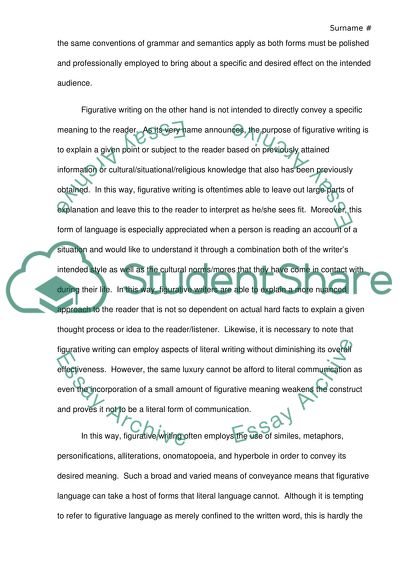Figurative Language versus Literal Language Essay - 1. Retrieved from https://studentshare.org/psychology/1459746-figurative-language-versus-literal-language
Figurative Language Versus Literal Language Essay - 1. https://studentshare.org/psychology/1459746-figurative-language-versus-literal-language.


